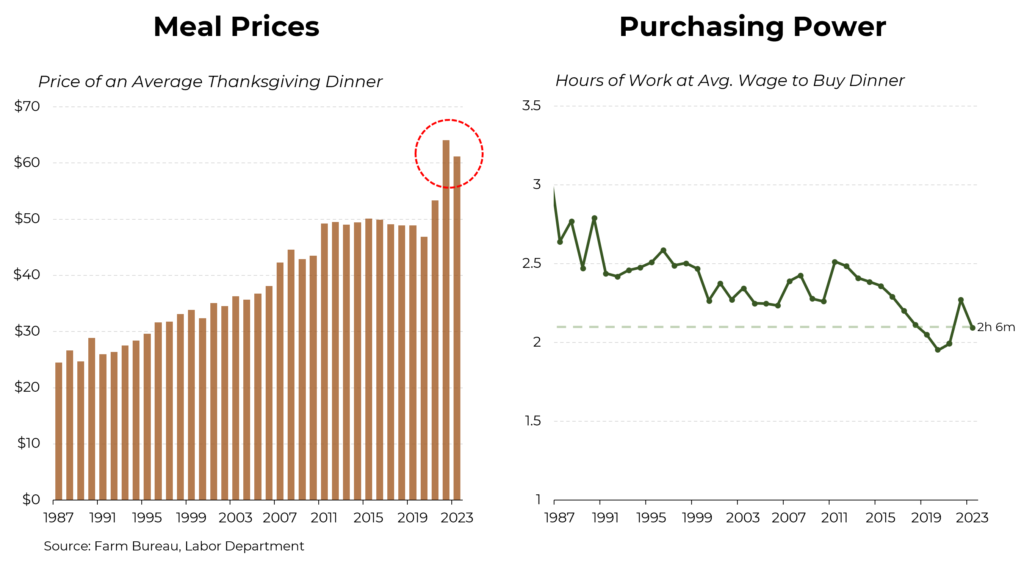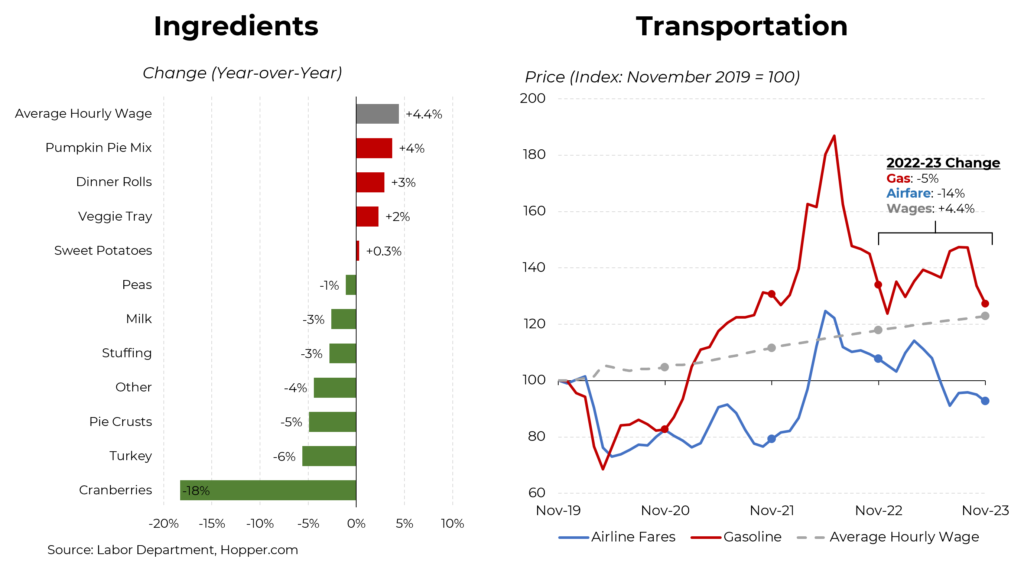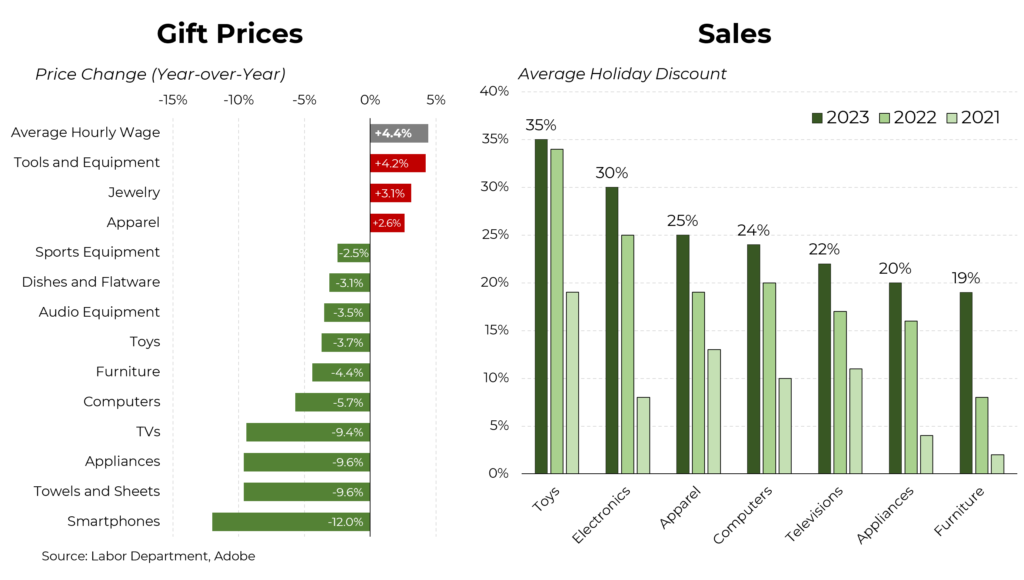After two years of escalating prices, there’s modestly good news this holiday season for both Thanksgiving diners and gift-shoppers: Prices for many popular items are lower than last year (or at least only modestly higher). This may come as a surprise to shoppers; a survey by Deloitte found that 72% of Americans expect higher prices this holiday season.
Let’s start with tomorrow’s holiday. According to the Farm Bureau, the average cost of turkey dinner for 10 people will total $61.17. (Yes, I know that seems impossibly low to residents of major cities.) That’s down 4.5% from last year’s $64.05. In fairness, after a decade of flat to declining expense, that meal cost just $49 in 2019, so we are still a long way from reversing the effects of inflation.
But another (and perhaps more accurate) way to assess the burden of paying for Thanksgiving is to measure it against wages. By this yardstick, we’ve made at least modest progress. In 1987, a typical American (production and non-supervisory) worker had to work 2 hours and 40 minutes to pay for Thanksgiving dinner. This year, it will take 2 hours and 6 minutes, the lowest ever except for 2019, 2020 and 2021, that latter two being Covid years.
Behind the averages lurks a wide dispersion of price increases and declines but all with a similar theme: Big increases in 2022 followed by partial or full reversal this year. Start with the turkey itself, which represents almost half of the cost of dinner and will cost almost 6% less than last year. But in 2022, after Avian Flu killed 7 million turkeys, prices rose by 21% in that year. Cranberries, however, reflect a different phenomenon. In part as a result of increased imports, prices fell by 18% this year after falling by 14% last year.
Going to visit relatives? Some of those costs have become more reasonable. As every American knows, gasoline prices have been on a roller coaster. Happily, this year they will average 5% less than last year. Meanwhile, airfares are not only 14% cheaper than 2022, they are below pre-pandemic levels. And as with Thanksgiving dinner, rising wages have well outpaced airfares and nearly kept up with gasoline prices.
Then there’s Black Friday and the ensuing pre-Christmas weeks. Holiday shoppers should be pleasantly surprised, again, particularly in comparison to last year. Many popular gift items like toys will cost substantially less than last year. And so will a number of household staples, such as furniture and bed linens. But as with Thanksgiving dinner, some of these price increases simply represent a reversal of Covid-related increases. Notably, for many electronics – televisions, smartphones and the like –the price declines this year follow drops last year and in some cases, even in 2021.
Discounts could make for even steeper drops in prices. Partly in a return to normalcy, partly because of high inventories and partly because of expectations of softer sales, retailers are expected to return to heavy discounting practices, particularly for items like toys and electronics.








